
NEW YORK HARBOR — Forty days before the 2017 gubernatorial election, a confident Phil Murphy strode into a union hall full of dockworkers. A crowd of rank-and-file union members held “ILA ❤️ Phil Murphy” signs and union leaders in dress shirts and ties vowed to help Murphy turn his commanding lead in the polls into four years in Trenton.
The former Goldman Sachs financier thanked the heads of the International Longshoremen’s Association for being with his campaign since its “cold, dark and lonely” early days. Then he made some vows of his own. But only one got the room full of some 200 waterfront workers to their feet.
“We’re going to figure out the damn Waterfront Commission once and for all!” Murphy said, pounding his knuckles on a lectern as the workers went wild. They jumped up, whistling, cheering and pumping their fits in the air.
Murphy knew getting rid of this fabled commission — the bistate police agency created to solve the crimes immortalized in the Marlon Brando movie “On The Waterfront” — was something the union had long wanted. But he couldn’t know that he was putting himself on a collision course not only with the lurid mob history of the waterfront, but with his opposite number across the harbor: New York Gov. Kathy Hochul.
Now the two Democratic governors are taking each other to the U.S. Supreme Court, with the New York side claiming that a generation of New Jersey politicians, including Murphy, have taken an ill-advised path to benefit a legendarily corrupt industry while the New Jersey side insists that its move is about modernizing the container port and attracting more ships.
Obscure to most in the rest of the country and even within much of New Jersey, the Waterfront Commission of New York Harbor was created in 1953 to solve problems that most people know about only from the 1954 movie — famous for Brando’s plaintive “I coulda been a contender” — which in turn was based on a series of newspaper and official investigations of organized crime and corrupt labor practices at the New York-New Jersey container port. Before the commission was created, it was said that the New York and New Jersey waterfront received not just more cargo than any port on the East Coast but produced more murders per square foot than any other section of the country.

In the decades since, the Waterfront Commission has vetted anybody who works on the waterfront and helped investigate numerous officials involved in the union to which Murphy was speaking, the ILA.
Now, though, it’s become the consensus among New Jersey politicians, the ILA and the shipping industry that the commission has outlived its useful life. They argue the commission chokes off harbor business and causes labor shortages by making it hard to quickly hire new dock workers. They say the commission does more to keep alive old and outdated stereotypes of violent thuggery than it does to actually clean up the port.
For years, New Jersey has tried to nudge New York to rein in the commission. Finally, though, New Jersey decided to just leave it, a move that would leave the commission powerless and unable to fund itself, since it relies on fees charged on shipping activity that is now largely in New Jersey.
In March, Hochul surprised her counterparts across the harbor when she decided to stage a bitter fight to save the commission. With an eye toward the New York City tabloids — which make their own kind of killing by writing about New Jersey mobsters — she and Attorney General Tish James decided to sue New Jersey to stop the state’s long-planned exit from the commission.

On paper, they argue New Jersey can’t unilaterally blow up a deal it made with New York to police their shared waterfront. New York and New Jersey have a long history of deals. The Port Authority of New York and New Jersey, created in 1921, was the first such agency in the country and now the two states have signed an agreement to create another bistate agency to build a $12 billion train tunnel across the Hudson River. If New Jersey can leave the Waterfront Commission, New York worries, it could abandon other big deals.
The legal arguments are one thing, the optics are another. New York has bolstered its case if not in the court then in the tabloids by drawing on tropes — some would say stereotypes — about organized crime in New Jersey. In a series of sharp legal briefs, Hochul and James suggested to the Supreme Court that Murphy was heading down a path that would invite violence and enable corruption by threatening to return the waterfront to the dark ways of the past. The ensuing chaos, New York warns, means the elimination of the commission would worsen and not improve conditions at the port, creating yet another crisis in the American supply chain.
“Protecting the safety of New Yorkers and our vital industries is my top priority, and we cannot afford to lose the Waterfront Commission’s unique authority and expertise in combating crime at our port,” Hochul said back in March, on the day New York took New Jersey to court.
The case against New Jersey now has the chance to stain Murphy’s reputation and that of much of New Jersey’s political class. That’s because nearly all of New Jersey's elected officials — Republican Chris Christie to Democrat Cory Booker — have come to agree on one thing: Something needs to be done about the damn commission.
But at the same time that politicians inside New Jersey agreed that was the way to go, nearly everyone outside of New Jersey has come to wonder just what the hell New Jersey is thinking.
It’s hard sometimes to remember that water made New York City the city it is. The city is still ringed by water, but the working waterfront is mostly a thing of the past, something most people only see from windows — from the expensive apartments, the good offices, from planes, cars and trains. Sometimes what’s visible is only the tops of cranes, the reams of tractor trailers coming and going, or the warehouses that litter the sides of the New Jersey Turnpike.
The main feature, of course — the cold, hard reality underpinning the whole operation — is the ships: huge, huge ships.
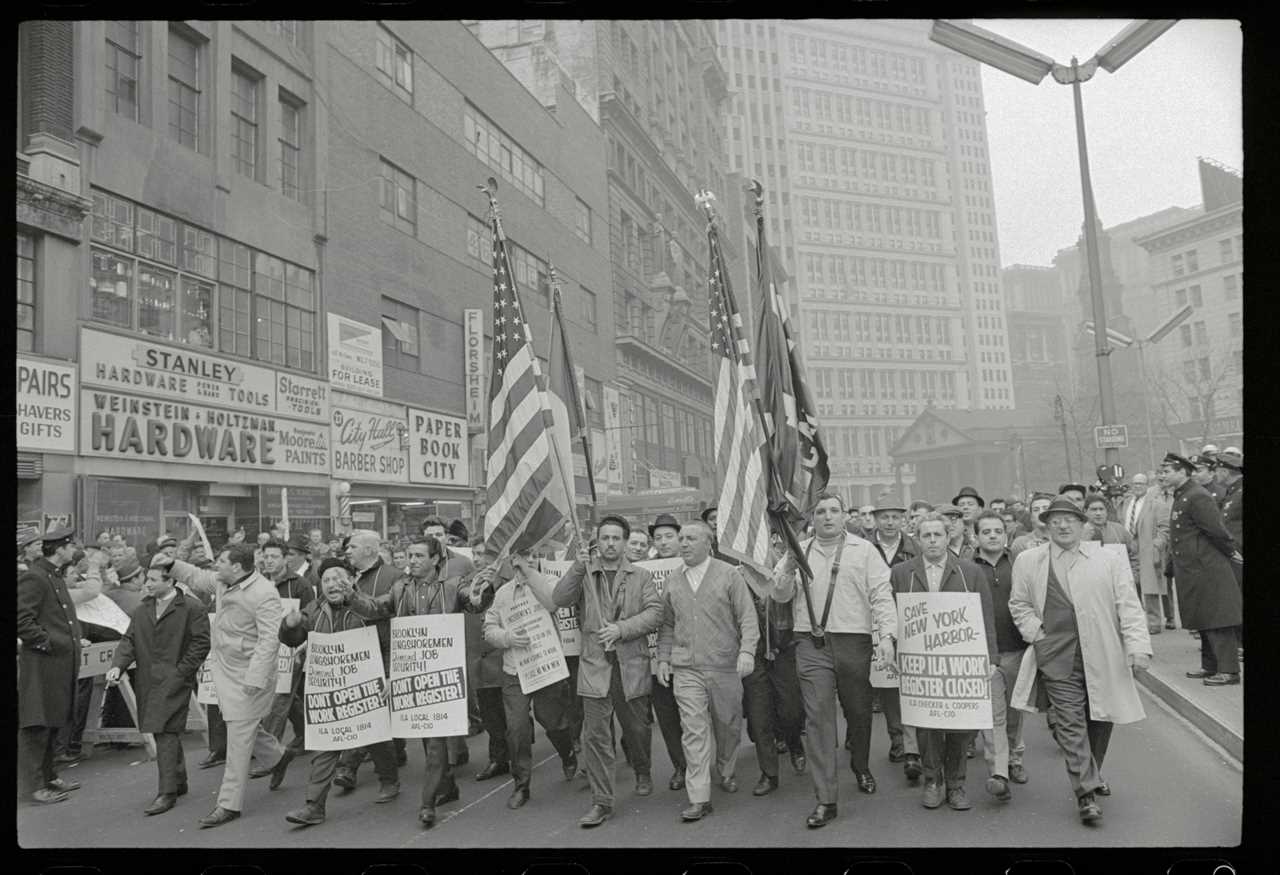
The distance between what can be seen and what goes on down there is a gap that remains hard to fill in. It is now, and it was back in the middle of the last century, when an editor at the New York Sun got interested in a waterfront-related murder and dispatched the paper’s star reporter down to the docks.“Why don’t you take a look,” the editor told his reporter. “Maybe you can get a story out of it.”
The reporter, Malcolm Johnson, found more than a story. He spent longer around the ships and the men who loaded and unloaded them than anyone expected. And he probed further than anyone imagined — and far more than some people wanted. When Johnson was ready to write up what he’d found after months along the waterfront, he’d filed a 24-part series of front-page stories that ran in late 1948.
Johnson spilled barrels of ink about the blood being spilled on the docks. He detailed violence and thievery and became one of the first reporters to document the existence of what is now known as the mob, a group of gangs that, as he put it, “take a cut on everything” that passed through the port of New York and New Jersey.
He also settled on a fix: change the whole system for how people get jobs on the waterfront. That was, he found, the center of all the trouble. Eliminate the hiring system known as the “shape-up,” the dominion of hiring bosses who chose among an excess labor force — dock workers who, if they wanted work, had to pay kickbacks and show allegiance. And to do that, he said, it was time to create an agency to regulate the docks and who worked there.
He wasn’t the first person to say this. As he reported at the time, efforts to crack down on corrupt union practices governing who could work in the lucrative waterfront jobs were floated in 1932, 1933 and 1946. None became law until after Johnson’s Pulitzer Prize-winning investigation.
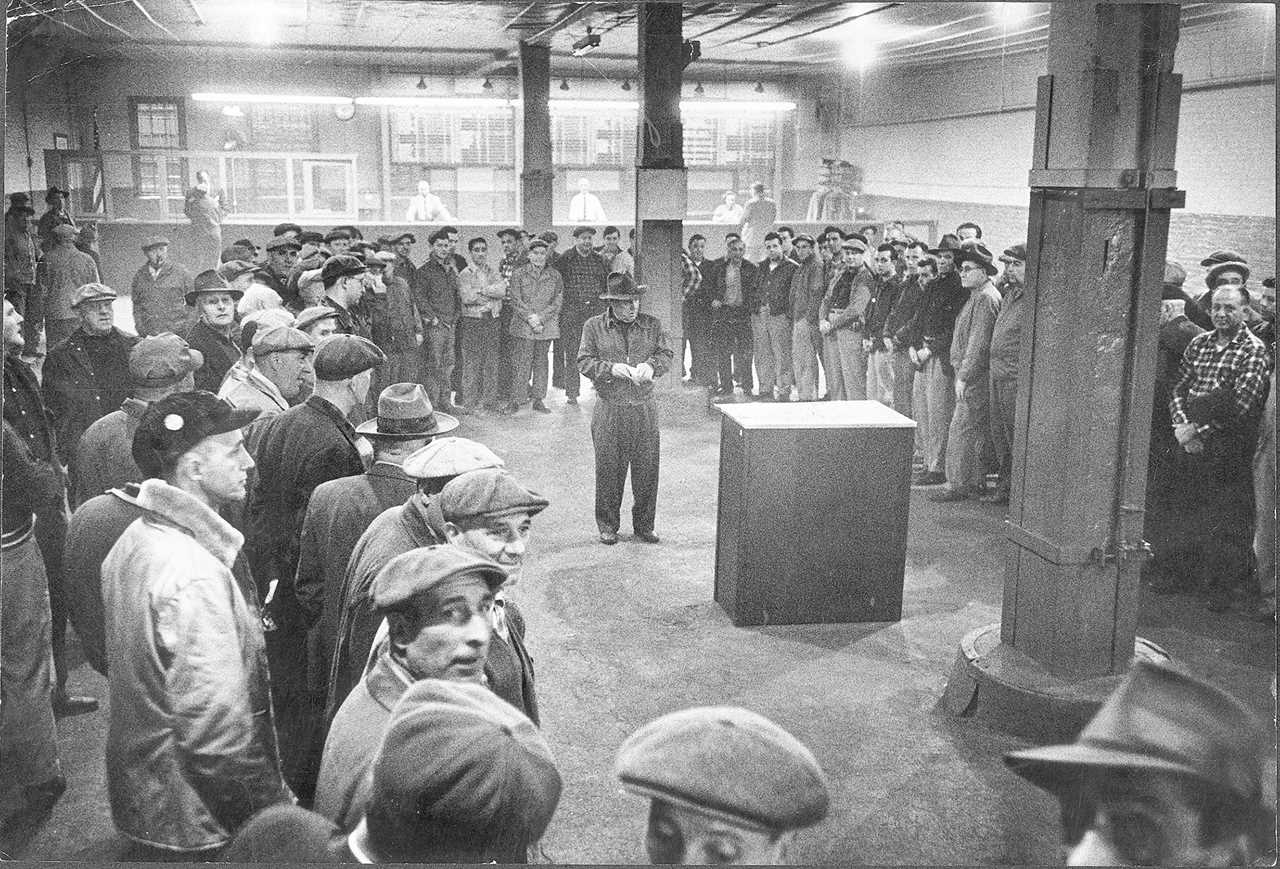
In 1953, New York and New Jersey got together and made it happen. Both legislatures passed identical versions of the same law. The task — getting both chambers of the New York Legislature and both chambers of the New Jersey Legislature and the governors of two states to all agree to the same thing — was a delicate dance. When the Waterfront Commission was born, New York’s governor at the time, Thomas Dewey, said it would end the “evil exploitation of labor and industry,” but he hoped the commission would be shut down as “quickly as possible after gangsters and hoodlums have been removed from the port and decency restored.”
The question now is whether 69 years is soon enough.
When it was created the task before the commission was enormous. In its early years, some 36,000 people worked on the waterfront. Now, there are fewer than 6,000 dockworkers.
It was in those early years that Arthur Miller, who wrote a play about the waterfront, could look across a bustling Brooklyn dock scene and write, “This is the gullet of New York swallowing the tonnage of the world.”
Now, it is New Jersey that swallows and New York that nibbles. Where 80 percent of work was once done in New York, more than 80 percent of the waterfront work is now in New Jersey.
The commission, as innovative as it was, is in some ways not constructed in a way that invites political balancing. The Port Authority — created back in the 1920s to modernize port infrastructure in the region — traditionally has an executive director from New York and a 12-member board that is always chaired by someone from New Jersey. When push comes to shove, the governor of each state has veto power over board action, something that Murphy has called a “nuclear option” and threatened to use in another dispute he’s having with New York over tolls on New Jersey commuters.
The Waterfront Commission, by contrast, is a small staff overseen by just two commissioners — one from New York and one from New Jersey and, while New Jersey has wanted to create a veto option, New York has never agreed to the change.
So it’s now a given to most people in New Jersey that it makes no sense to have a 50-50 commission regulating an industry that is now almost entirely in New Jersey.
“Frankly it’s not their business anymore,” New Jersey state Sen. Joe Cryan, a Democrat who represents the waterfront, said in an interview.
As a matter of Garden State pride, the cause of reforming the commission has attracted widespread support in Trenton.
And as they push for more control over the waterfront, New Jersey politicians and union leaders insist that tales of corruption are largely overblown. They dismiss the constant mentions of a movie from decades ago, the trotting out of investigations and prosecutions of ILA members, including one big case that fell apart, and the fear that somehow everything would go back to the way it was, as if it could.
John P. Sheridan, an attorney for the ILA, said the commission has an “anti-union, anti-labor bias” and much of the talk about crime running rampant without it around is a “red herring.”
"I know the tabloids like to focus on ‘crime is going to run rampant,’ ‘New Jersey doesn't care’ — that's just not the case," he said.
Sheridan said the industry needs breathing room to hire new people. Right now, the commission can limit how many people are hired. When there are openings, people have to go through a complicated process even to be considered for a job. Everyone has to be referred — which the union, the shipping industry and local labor departments can do — and then sponsored by a shipping company that has job openings on the docks. Then the Waterfront Commission reviews each candidate.

The shipping industry says this all takes too long, and the union says its referrals face lengthy scrutiny.
Their solution is to let companies hire as many people as they need when they need them, but have the New Jersey State Police do background checks. The police already play a similar role in the New Jersey waste management and casino industries. Let them do that, the union and shipping industry argue, without funneling new hires through an agency that gives power to New York and takes its sweet time.
Still, the leave-it-to-the-police mantra isn’t new. Even before the commission was created, one target of Johnson’s Sun investigation, a corrupt ILA leader by the name of Joe Ryan, suggested all the crime hadn’t been such a big deal.
“I don’t see there’s any more crime on this waterfront than there is on any other waterfront or any other section of society, and if there is I feel that our police and our district attorney and the rest of them are well able to cope with it,” Ryan told New York investigators in the early 1950s. “From what I read in the papers would indicate that there is nothing but crime on the waterfront. It’s not fair to the thousands of men that make their living there.”
Seventy years later, those lines remain among the top talking points for commission foes.
Former New Jersey state Sen. Raymond Lesniak, who is arguably the architect of modern efforts to dismantle the commission, said that there may be crime on the waterfront but “not to any greater extent than organized crime is involved in any other activity in the state of New Jersey.” (Back in January, a onetime aide to Lesniak pleaded guilty to hiring two people to kill someone. The aide has yet to be sentenced.)
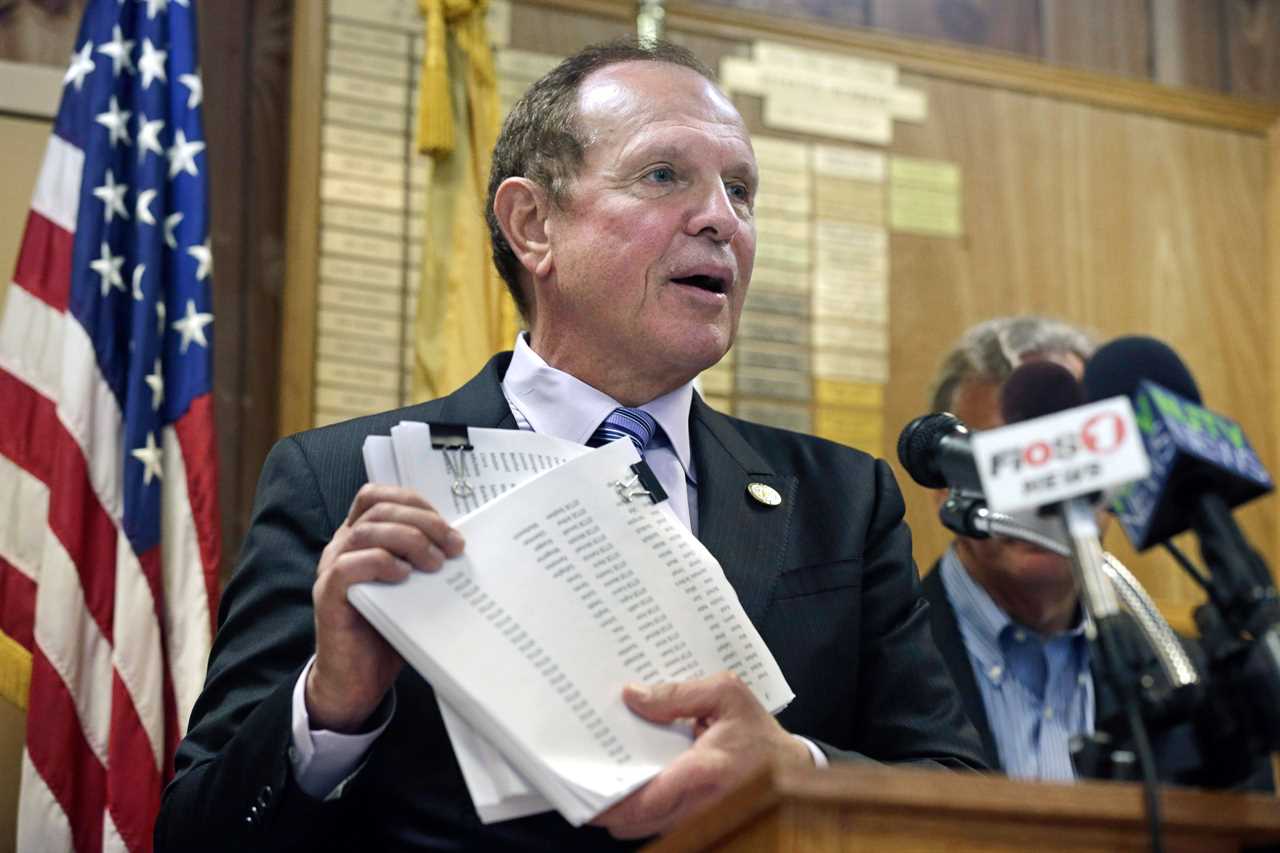
Lesniak, a Democrat, said he took up the cause of reining in the Waterfront Commission after he started hearing complaints from the shipping industry about the commission hurting New Jersey’s economic growth potential.
A POLITICO analysis in 2015, as the pressure to exit the commission was heating up, found that the union and shippers had contributed more than $1.8 million to political candidates, parties and committees in New Jersey over three decades, with the union accounting for more than $1 million of that total.
Another reason these bills had so much support is that just as it was facing scrutiny, the Waterfront Commission managed to shoot itself in the foot.
In 2009, the office of the New York Inspector General released a damning report on the commission. The audit — at the point one of only two of the commission since its founding — found that its then-general counsel, Jon Deutsch, had orchestrated a scheme to allow a company whose owner had been convicted of federal racketeering charges to continue to operate on the waterfront under a shell company nominally operated by the racketeer’s wife. He also failed to recuse himself from review of an application of a close family friend and the son of a former New Jersey state senator who had recommended Deutsch for another job. And, finally, to top it off, the audit found that Deutsch improperly took a primary role in the investigation of Albert Cernadas Sr., a union official and the father of another close friend.
Deutsch was eventually terminated, though his attorney ","link":{"target":"NEW","attributes":[],"url":"https://www.nytimes.com/2009/08/12/nyregion/12waterfront.html","_id":"00000180-eb7c-d3ba-ab85-fb7fba810000","_type":"33ac701a-72c1-316a-a3a5-13918cf384df"},"_id":"00000180-eb7c-d3ba-ab85-fb7fba810001","_type":"02ec1f82-5e56-3b8c-af6e-6fc7c8772266"}">called the audit a “witch hunt” at the time. In response to one allegation that he helped a friend of the Cernadas family, Deutsch said, “I mean New Jersey's a little different than New York. I mean, we know people."
Several years later, Cernadas admitted his involvement in the Genovese family, including conspiring to compel tribute payments from ILA union members and extorting dockworkers. Cernadas was sentenced to probation.
“This was a total agency breakdown,” the New York Inspector General Joseph Fisch said at the time. ”Instead of ridding the waterfront of corruption, this agency itself was corrupt.”
Though the commission has since cleaned house, New Jersey officials still sometimes say the commission itself is corrupt at the same time they argue organized crime isn’t the presence it once was.
But after Lesniak began holding hearings about the Waterfront Commission, it became clear there was at least some crime on the waterfront.
In 2004, federal prosecutors went after the current president of the ILA, Harold Daggett, accusing him of benefiting from a mob conspiracy to elect him head of the ILA, which he was not at the time. The case fell apart, in part because the star witness — a hit man who co-founded the gang the Jets and was clinically deaf so could only read lips — wasn’t considered credible by the jury. One of the co-defendants in the case was missing during the trial and later found decomposing in the trunk of a car — acquitted but dead.
Over a decade later, then-New York Gov. Andrew Cuomo, a Democrat, chose one of the lead prosecutors in that case, Paul Weinstein, to be New York’s waterfront commissioner.
During the trial, Daggett denied wrongdoing and said he had risen through the union ranks because of worker support, not the mob. Daggett testified that the hit man who was cooperating with the government in the case had put a gun to his head years earlier. Why? Because Daggett was intent on moving the union from Manhattan to New Jersey, where most of the workers now are.
Daggett declined to comment for this story, but the ILA attorney said he was completely cleared of wrongdoing.
"Weinstein produced no evidence that Harold Daggett did anything, knew anything,” Sheridan said. “There was no evidence, so that's why the jury rightly found him not guilty of anything he was accused of, any crime at all.”
The effort to prosecute Daggett put the issue of ongoing corruption front and center in the battle over the commission.
New Jersey official after New Jersey official, speaking on condition of anonymity to speak candidly, will say there isn’t much crime on the waterfront so the commission isn’t needed. But then when they are asked about the crime on the waterfront, they say, well, that’s proof the commission isn’t doing its job well.
Senior officials in the Murphy administration, speaking on behalf of the governor but declining to be quoted by name, suggested that the fight against corruption could be better maintained without the commission. Asked if they knew of other police agencies that had gotten the ax after not stopping crime — Was the Newark police department going to be eliminated because there’s still crime in Newark? Should the FBI be shut down because they still have mob cases, even though they have long been tasked with reining in the mob? — they insisted the commission was outdated.
The officials argued the commission isn’t uniquely able to go after organized crime, but instead it’s uniquely structured in a way that holds up commerce at the port.
Among commission allies — including Hochul, whose official declined to comment beyond already public statements and court filings — it’s a given that organized crime is happening.
In 2010, the head of one ILA local came to a New Jersey legislative hearing with an old baling hook that longshoremen used to unload cargo in the 1950s — a hook that has been made useless in the era of shipping containers — and said the commission was as outdated as the hook because it was “still living in 1953.”
A few months later, the same union official, Thomas Leonardis, then head of ILA Local 1235, was arrested on federal charges and eventually admitted that he conspired to extort union members to make Christmastime "tribute" payments. The Waterfront Commission helped with the investigation. He was sentenced to 22 months in prison.
That official isn’t the only other ILA leader to get in trouble. In a sworn statement submitted to the Supreme Court in support of New York’s side, the Waterfront Commission’s executive director, Walter Arsenault, said in the 13 years since he took over following the damning inspector general’s report, there have been major mob and union-related cases. Arsenault said two dozen members and officials of the ILA and mob pleaded guilty to conspiring to extort millions from dockworkers, then funneling the money to the Genovese crime family, and another ILA official pleaded guilty to embezzling union funds. Likewise, the commission said over 300 people “associated with organized crime” were either removed or prevented from working on the waterfront.
Sheridan, the ILA attorney, said that the union is focused on representing its members in collective bargaining with the shipping industry and anything different than that is not something the union wants to be a part of.
"They are happy to have any of that element away from the union," he said.
Arsenault portrays the commission as a pillar of institutional knowledge about a special corner of the mob scene. He rattles off intricate layers of association among criminals and suspects that, despite the commission's work, still exist.
(The New Jersey State Police, of course, might hire people like Arsenault. In fact, they tried to hire away members of the commission’s 40 or so member police force earlier this year. In the weeks before New York sued, the state police urged Waterfront Commission staffers to apply for jobs with the state. But none did.)
When it comes to the attacks on the commission, Arsenault said he sensed the ILA led the charge, until people like the guy with the hook were in trouble, rendering them ineffective messengers.
“In the early days, the ILA always testified, then when the indictments were coming down, the shipping association started carrying the water for the ILA against the commission,” he said.
The New York Shipping Association, which represents the shipping industry and is now based in New Jersey, views the commission as an “outdated and unhelpful entity” that intervenes unnecessarily in hiring “seemingly to justify the agency’s own existence.”
“Commission staff have imposed ever-changing bureaucratic regulations and hurdles to hiring efficiency,” the association’s president, John Nardi, said in a sworn statement to the Supreme Court in support of New Jersey’s side.
What counts as a mob tie has become one of the main problems that the union and the industry have with the commission. They say Arsenault and his team go after workers and potential hires because of who they might know rather than an individual’s actual wrongdoing.
“It’s a damn tragedy for the Waterfront Commission to enjoy free reign and target Italian Americans as part of their historic anti-worker campaign. Let’s be real here. The Waterfront Commission has, for decades, claimed good jobs went to only those with so-called ‘mob ties,’ ” Harold Daggett said in a recent statement aimed at Hochul. “They tried to back up their false claims by listing names and displaying photographs of Italian American ILA longshore workers, most who have distinguished themselves with helping to make this Port one of the greatest, most productive ones in America.”
Union Vice President Dennis Daggett — Harold’s oldest son — has gone further in the past. After Murphy spoke at the 2017 campaign event, Dennis took the stage and compared the commission to the Gestapo, the Nazi secret police. Murphy, a former ambassador to Germany in the Obama administration, stood beside Daggett as he spoke.
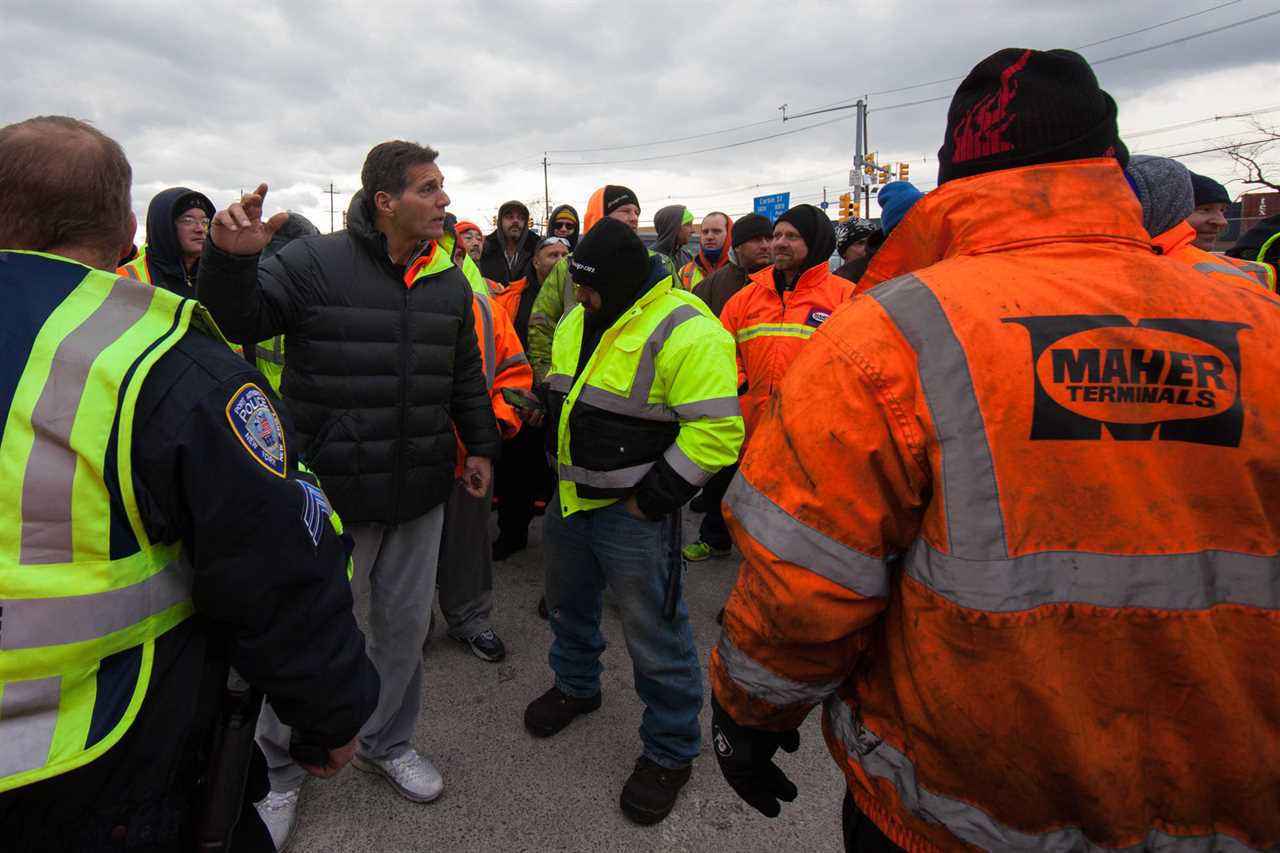
One waterfront worker, Pasquale Falcetti Jr., claims in court filings that the commission kept him off the docks because his father was a mobster. Courts have so far sided with the commission, but Falcetti’s attorneys — including George Daggett, Harold Daggett’s cousin — have argued the son is paying for the sins of the father.
Incidents such as this involving Italian families have prompted the allegation that Italians get closer scrutiny.
When Hochul sued to save the commission and cited the danger of the mob, Daggett, the ILA president, said in a statement, “that’s total bullshit, and a dark, ugly attack on Italian Americans.”
There are still a lot of Italian and Irish workers on the waterfront, though. Indeed, in the background of the fight over the waterfront is the question of who can best steer what jobs are left to a more diverse workforce.
State Sen. Ron Rice, a member of the New Jersey Legislature’s Black caucus, wants to get rid of the commission — Rice, a former detective in Newark, thinks the state police can do a better job policing the port — but also has criticized the ILA for diversity issues. He said both the ILA and the Waterfront Commission are at fault, citing an ILA local that is 85 percent Black, while there is another local that is 85 percent white and represents workers in what the commission calls “highly sought” jobs.
"I've always argued in New Jersey, why do you need a quote-unquote Black union if you are doing the right thing," Rice, a Democrat, said in an interview.
Just weeks after Murphy was elected in 2017 but before he took office, a bill to pull New Jersey out of the commission made its way through the legislature.
It wasn’t the first time. In 2015, Christie, a former federal prosecutor, took a look at the bill and vetoed it. Yes, he agreed that the commission had problems. But he also worried New Jersey’s exit wouldn’t stand up to Supreme Court scrutiny, since it’s unclear if a state can unilaterally leave a bi-state agency.
Then, three years later, on his final day in office, Christie showed he’d had a change of heart. Why and how he changed his mind isn’t clear.
The best explanation and received wisdom is that Lesniak simply had to take his name off the bill. Lesniak, a Democrat who had unsuccessfully run for governor and who had urged probes into Bridgegate, the Christie era scandal, had been the bill’s main sponsor. Lesniak said Christie got word to him through then-Senate President Steve Sweeney, a Democrat, that if Lesniak withdrew as the named sponsor of the bill, the governor would sign it. Lesniak did it and Christie signed the bill on his last day in office.
Christie did not respond to a voicemail left at his office. Sweeney also did not respond to a voicemail seeking comment.
Murphy inherited the law — and was slapped with a lawsuit from the commission on his first day in office.
The case bounced around lower courts for a few years, but the Supreme Court decided last fall not to take the case. Then New Jersey proceeded as if it had won and was free to leave. But it hadn’t won. It simply hadn’t lost.

The day the Supreme Court decided not to take the case, an influential Democratic New York lawmaker, Amy Paulin, who heads the legislative committee that oversees agencies like the Waterfront Commission, fired off a letter to Hochul.
The plea was simple: Save the Waterfront Commission.
Paulin said she has no doubt New Jersey officials believe what they’ve heard from the ILA — but that states should not be able to quit these sort of bistate efforts without the consent of the other state.
“That would set a precedent for us to withdraw, if we desired, from the Gateway Commission, from the Port Authority, and creates a terrible, terrible precedent going forward,” she said in an interview, referring to the agencies tasked with making sure New Jersey commuters are able to reach Manhattan.
The commission seemed to have a few other friends, too. Last summer, the U.S. Department of Justice, the FBI, Department of Labor and U.S. attorney for the Southern District of New York also all argued the Waterfront Commission’s role remains vital.
But Murphy’s administration still proceeded late last year and through March as if Hochul wouldn’t lift a finger.
Murphy’s plan was to leave the commission on March 28 and the state police had begun gearing up to start handling background checks and policing the port.
Plus, for good measure, Murphy began trying to weaken it even before then. Unlike Cuomo, who had picked a prosecutor to be on the commission, Murphy had once tried to name Lesniak as a commissioner. When that failed amid questions about whether Lesniak was conflicted out of being on the commission he was working to kill, Murphy named the owner of a major construction company, Joseph Sanzari, to be on the commission.
In Murphy’s own telling, Sanzari helped Murphy get ILA support during his 2017 run for governor. During the speech in the union hall, Sanzari was seated a few spots away from Murphy and near Harold Daggett, whom Sanzari has called a good friend and who made Sanzari an honorary member of the ILA.
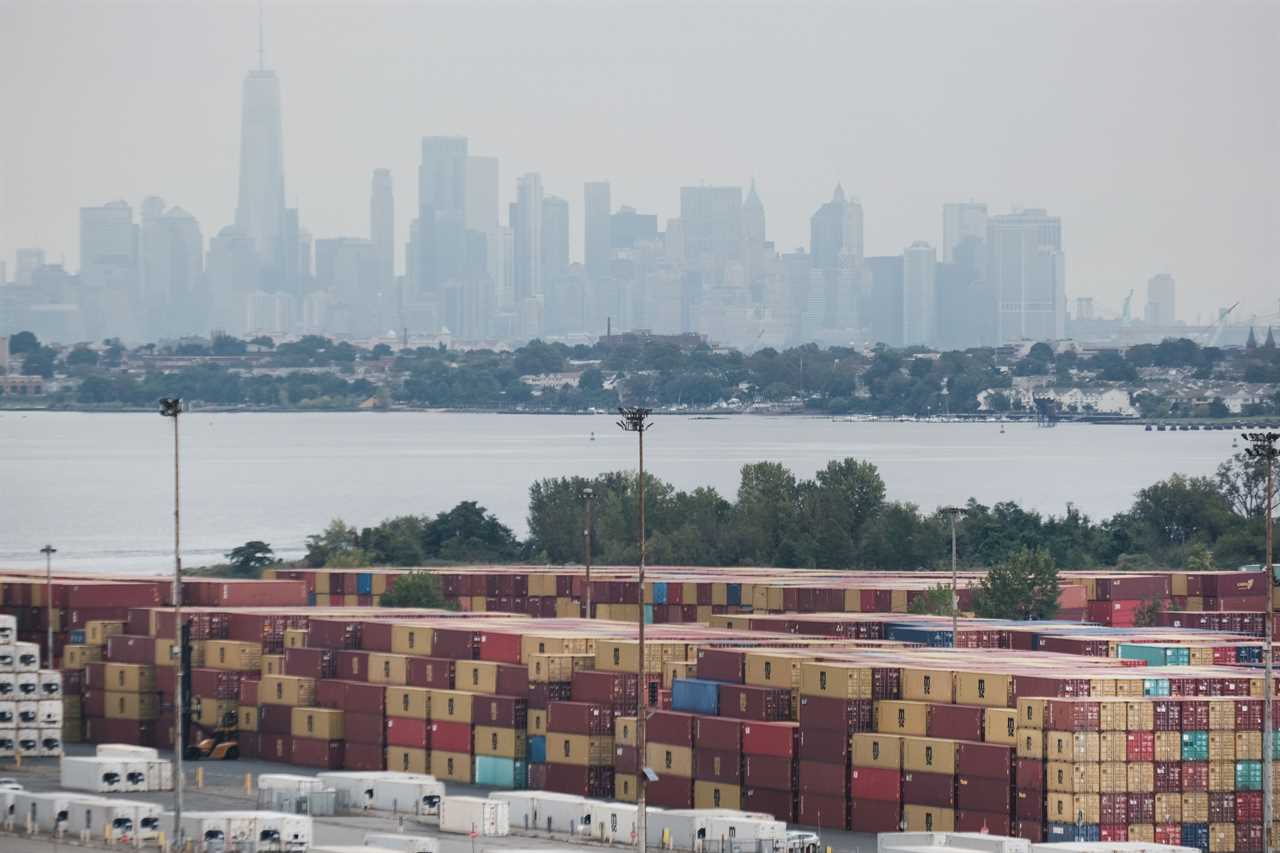
It looked as if New Jersey was about to be free of the commission.
But on the weekend of March 12, Hochul’s people began getting word out to allies that the new governor had decided to sue to save the commission. In the most dire terms, New York’s leaders argued that New Jersey’s plans to pull out of the commission would over the long term invite a resurgence in mob activity, and could immediately endanger the lives of undercover detectives and lead to “clashes.”
The Supreme Court looked at the case and put an injunction on New Jersey’s exit plans. Suddenly, New Jersey’s exit plans were back on hold.
In a relationship between the two states where tension and cooperation occur simultaneously, Murphy has since helped Hochul raise money for her campaign this year. In mid-May, after less than five months on the commission, Sanzari resigned from it. Murphy, who previously threatened to halt the commission’s work by not naming someone to the commission, has promised to fill the vacancy shortly.
But how long the commission will last is now in the hands of the court, as is the image of New Jersey’s waterfront. Decades ago, a columnist for a New York paper wrote about the investigations that inspired “On the Waterfront” — “a lot has been said and written about the New York waterfront since then; it has all been supplementary.”
That picture of life on the docks — immortalized by Brando’s plaintive performance and Budd Schulberg’s script — can seem indelible. The question now before the court is whether it deserves to be.
----------------------------------------
By: Ry Rivard
Title: The Mob, Marlon Brando and the New Battle Over the Waterfront
Sourced From: www.politico.com/news/magazine/2022/05/20/waterfront-commission-murphy-hochul-00033058
Published Date: Fri, 20 May 2022 03:30:00 EST






